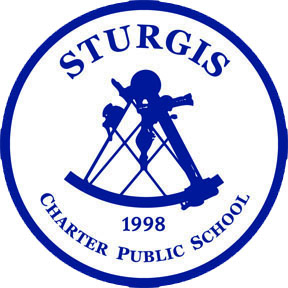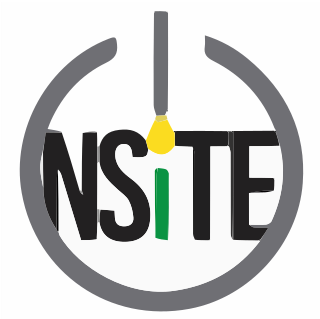
Postgraduate or graduate education refers to academic or professional degrees, certificates, diplomas, or other qualifications pursued by post-secondary students who have earned an undergraduate (bachelor's) degree.

A CEGEP, also written cégep, CÉGEP and cegep, is a publicly funded college providing technical, academic, vocational or a mix of programs; they are exclusive to the province of Quebec's education system. A loanword from French, it originates from the French acronym for Collège d'enseignement général et professionnel, sometimes known in English as a "General and Vocational College"—it is now considered a word in itself.

Secondary education in the United States is the last six or seven years of statutory formal education, including grade 6 or grade 7 through grade 12. It occurs in two phases. The first is the ISCED lower secondary phase, a middle school or junior high school for students grade 6 through grade 8. The second is the ISCED upper secondary phase, a high school or senior high school for students grade 9 through grade 12. There is some debate over the optimum age of transfer, and variation in some states; also, middle school often includes grades that are almost always considered primary school.

Bright Futures is a scholarship program in the state of Florida. It is funded by the Florida Lottery and was first started in 1997.

The Florida Comprehensive Assessment Test, or the FCAT/FCAT 2.0, was the standardized test used in the primary and secondary public schools of Florida. First administered statewide in 1998, it replaced the State Student Assessment Test (SSAT) and the High School Competency Test (HSCT). As of the 2014-2015 school year FCAT was replaced in the state of Florida. The Florida Department of Education later implemented the Florida Standards Assessments (FSA) for English Language Arts, Reading, Mathematics and a Writing or typing test. A Comprehensive science test is still used for grades 5 and 8.

The Miami Valley Career Technology Center (MVCTC) is a public career technology school in Englewood, Ohio. It serves five southwestern Ohio counties. Prior to 1994 it was known as the Montgomery County Joint Vocational School.
University admission or college admission is the process through which students enter tertiary education at universities and colleges. Systems vary widely from country to country, and sometimes from institution to institution.
A credit is the recognition for having taken a course at school or university, used as measure if enough hours have been made for graduation.
In New York State, Regents Examinations are statewide standardized examinations in core high school subjects. Students are required to pass these exams to earn a Regents Diploma. To graduate, students are required to have earned appropriate credits in a number of specific subjects by passing year-long or half-year courses, after which they must pass at least five Regents examinations in some of the subject areas. For higher-achieving students, a Regents with Advanced designation and an Honors designation are also offered. Students with disabilities or enrolled in an English as a Second Language program are able to earn a local diploma.

The Sturgis Charter Public School is a dual-campus charter school located in the village of Hyannis, Massachusetts, United States. The school received its charter in February 1998 and opened in September for the 1998–1999 academic year with 162 freshman, 15 faculty and staff, a newly renovated facility, and a $1.2 million budget. The school philosophy is International Baccalaureate for all students.
A school leaving qualification is an academic qualification awarded for the completion of high school. Depending on the country or region, it may alternatively be known as a high school diploma, senior secondary leaving certificate, high school general certificate or school certificate.
The California High School Exit Examination (CAHSEE) was an examination created by the California Department of Education, that was previously mandated to administer in high schools statewide in order to graduate. The examination was suspended in 2015, when Governor Jerry Brown signed a bill undoing the decade old requirement. It was originally created by the California Department of Education to improve the academic performance of California high school students, and especially of high school graduates, in the areas of reading, writing, and mathematics. In addition to other graduation requirements, public school students needed to pass the exam before they could receive a high school diploma.

NSITE High School is a business and technology magnet high school part of the Northside Independent School District in San Antonio, Texas. It is a "school within a school" located on the campus of Oliver Wendell Holmes High School. The school attracts students who want to study business and other related fields. The school allows the students to grasp the concepts of the business world easier by offering laptops to each student to use for a school purposes.

An academic certificate is a document that certifies that a person has received specific education or has passed a test or series of tests.
A super senior is a student in a four-year educational institution, such as a high school or undergraduate school, that has over 4 years in attendance or has a surplus of credits required for a diploma and has not yet graduated.
The Rhode Island Department of Education (RIDE) is a state agency in Rhode Island that oversees the elementary and secondary education system from pre-Kindergarten through high school. It is headquartered in Providence. RIDE works closely with the Rhode Island Office of the Postsecondary Commissioner (RIOPC), the agency charged with overseeing higher education. Together, RIDE and RIOPC aim to provide an aligned, cohesive, and comprehensive education for all students.

Monsignor Fraser College is a Roman Catholic specialized dual-track Alternative and Adult Secondary School run by the Toronto Catholic District School Board in Toronto, Ontario, Canada. The school was named in honour of John Andrew Mary Fraser', the founder of the Scarborough Foreign Mission Society and a missionary.
A high school diploma is a diploma awarded upon graduation of high school. A high school diploma is awarded after completion of courses of studies lasting four years, typically from grade 9 to grade 12. It is the school leaving qualification in the United States and Canada.

James Madison High School (JMHS) is a for-profit distance education private high school headquartered in Peachtree Corners, Georgia, United States. It is regionally and nationally accredited. It provides the curriculum needed for students to complete one to four years of high school coursework online for a general or college prep high school diploma.
Education in British Columbia comprises public and private primary and secondary schools throughout the province. Like most other provinces in Canada, education is compulsory from ages 6–16, although the vast majority of students remain in school until they graduate from high school at the age of 18. In 2020, 86% of students in British Columbia graduated from high school within six years of entering grade 8. It is also common for children to attend kindergarten at the age of 5, it is increasingly common for even younger children to attend pre-school or early learning programs before their formal school age years.











